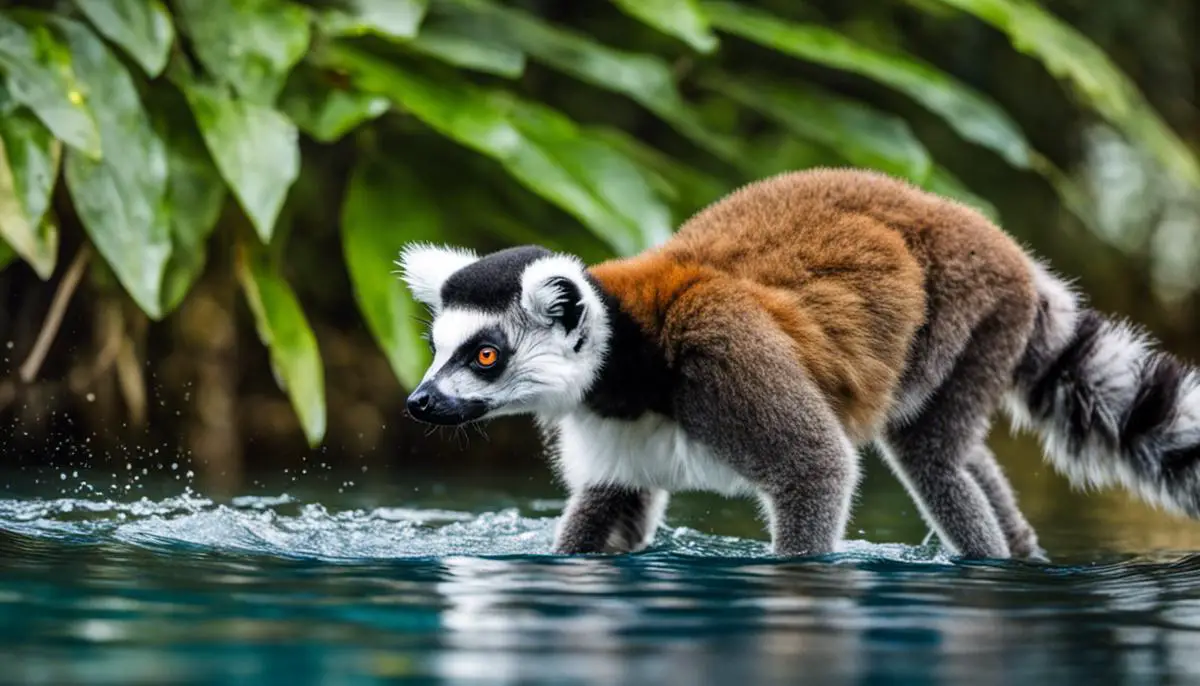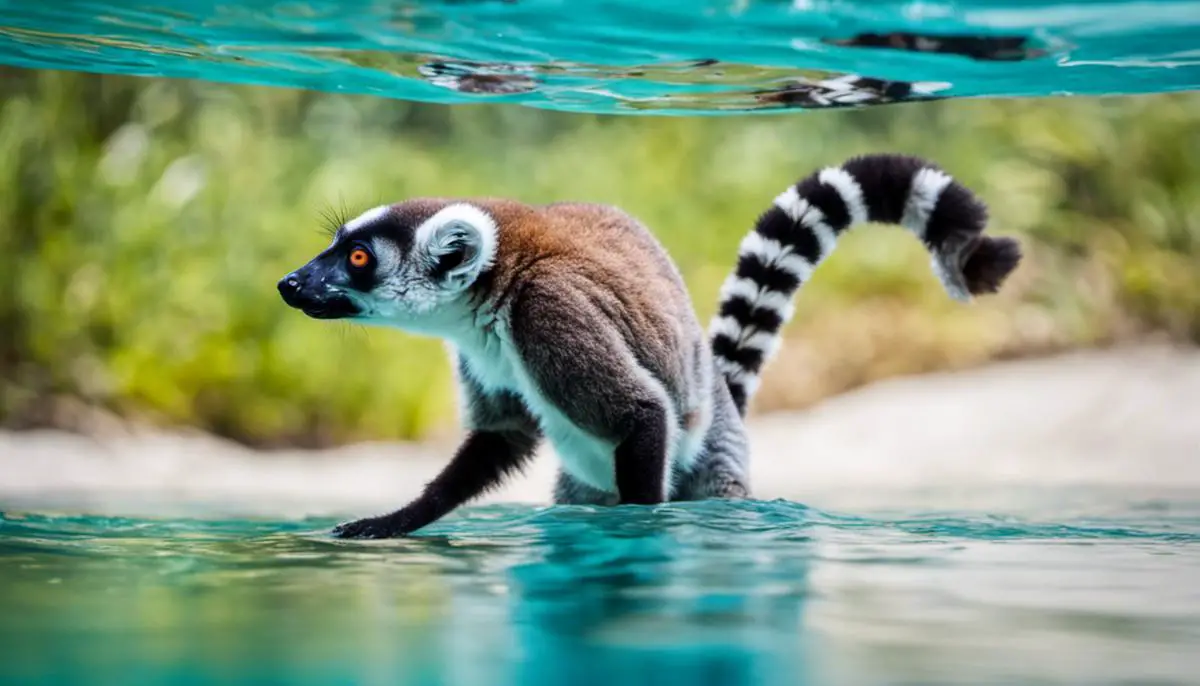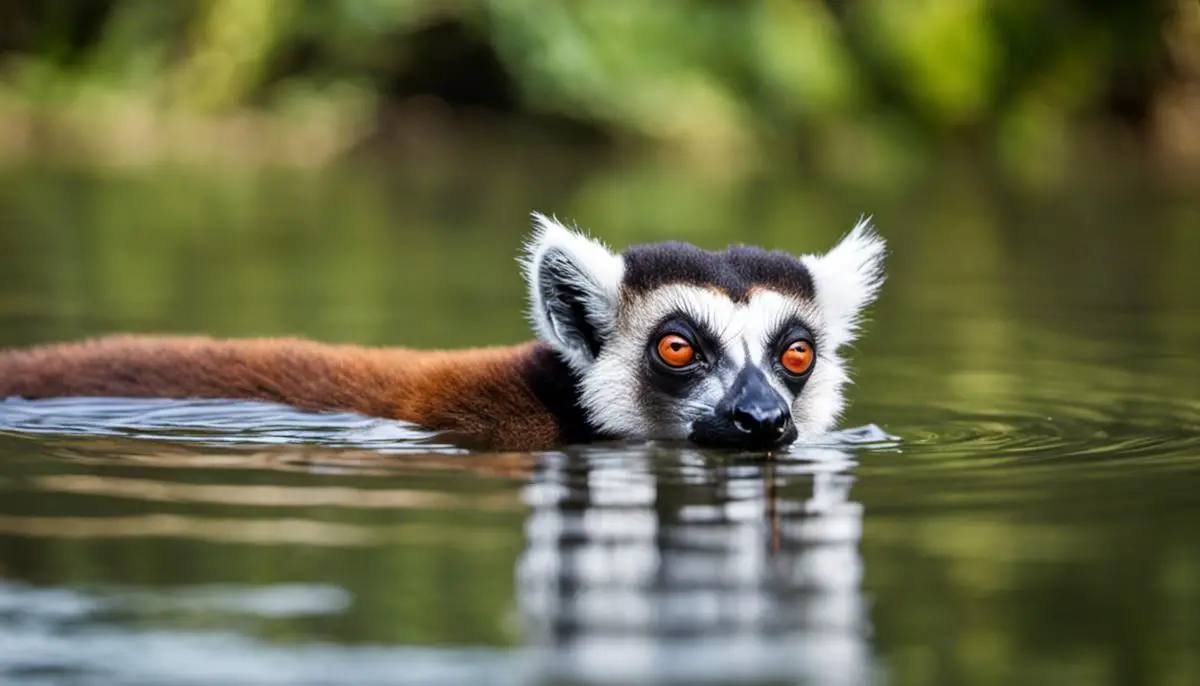Exploring Aquatic Abilities: Can Lemurs Swim?
Yes, lemurs are capable of swimming, but they generally prefer to avoid water and are not strong swimmers.
Certainly, while lemurs can swim, it’s important to note that swimming is not common or preferred behavior for them. Lemurs are primarily arboreal creatures, spending most of their time in trees and relying on their agility in the treetops for safety and sustenance. Their physical adaptations are better suited for climbing and leaping than swimming. When faced with the need to cross bodies of water, they may paddle or float briefly, but they tend to avoid water whenever possible due to their vulnerability on the ground and in aquatic environments.
The captivating world of the lemur species presents an array of intriguing questions, often providing surprising insights into their remarkably versatile and adaptive behaviours. One of the areas that has sparked a particular interest among researchers is the aquatic capabilities of different lemur species.
This arena has expanded further to encompass the critters’ anatomical and physiological traits that enable them to exhibit specific behaviors when encountering water. In order to broaden our comprehension of the adaptability of these species in different environments, this discussion seeks to scrutinise the various aspects that contribute to lemurs’ water-related abilities.
It strives to intersperse knowledge from real case examples and scientific literature, while dissecting their physical attributes and behavioral mechanisms. The objective of this intriguing exploration is not only to comprehend how lemurs react and adapt to aquatic environments, but also to highlight the potential evolutionary implications of these characteristics.
Aquatic Behaviours of Different Lemur Species
Lemurs, predominantly arboreal and endemic to Madagascar, exhibit a fascinating range of behaviours when introduced to aquatic environments. Their performance and reaction, unsurprisingly, vary across different lemur species due to the distinct physiological adaptations and behavioural traits each species has uniquely evolved. This variance among these primates poses interesting indications about evolutionary mechanisms and adaptive traits that operate in these charismatic creatures.
Species such as the ring-tailed lemur (Lemur catta), for instance, display a remarkable adaptability to water, exhibiting adeptness for swimming and flotation. They use a unique technique coupling a dog-paddle style with their hind legs and tail to navigate the aquatic settings with relative ease. This species’ observations suggest a potential adaptative utility of water traversing in search of nutritional resources or escaping territorial threats, adding a rich layer to our understanding of lemur behavioural ecology.
Conversely, species such as the Indri (Indri indri), typify an aversion to water and present a trembling reaction upon water exposure. Arboreal in nature and believed to be one of the least adaptive lemurs, the Indri tends to rely heavily on leaping through trees, negating the need to venture into aquatic environments. This dichotomy between different species elucidates the varying degrees of adaptability among lemur species, underscoring the importance of an ecological, geographical, and behavioural dynamic in shaping species traits.
Undoubtedly, the exploration of lemur responses to aquatic environments presents a riveting intersection of behavioural and evolutionary biology. It advances our comprehension of not just lemurs themselves, but also the evolutionary pathways and survival strategies utilised by all primate species.
The interplay between environment and species adaptation continues to spark ongoing discourse in primatology and conservation biology communities and will unquestionably remain, a vital focal point of future research ventures.

Anatomical and Physiological Considerations
Indeed, while featuring distinct differences across species, lemurs can exhibit an array of swimming capabilities which are invariably underpinned by unique anatomical and physiological aspects.
Configuration of the limbs, for instance, dramatically influences lemur swimming abilities.
Species such as the ring-tailed lemur, showcase a distinctive capacity for semi-quadrupedal swimming, a capability which has been attributed partially to their pronounced limb flexibility.
This adaptability, coupled with their crucially mobile digit configuration, grants plural lemurs a logarithmical advantage when in aquatic environments.
The role of oxygen consumption in influencing lemurs’ capacity to swim cannot be underestimated.
The high surface area to volume ratio inherent to most lemurs comparatively accelerates heat loss, potentially inducing a state of hyperthermia should the animal be subjected to extended aquatic periods.
This thermoregulatory evolution correlates to the arboreal and terrestrial habitats lemurs predominantly inhabit, optimally minimising their energy expenditure in these environments, yet conversely decreasing their swimming efficiency.
Evidently, a spectrum of anatomical and physiological adaptations underpin the varying swimming capabilities amongst lemur species.
Whilst certain aspects allow more proficient swimming, such as the enhanced flexibility in ring-tailed lemurs, others limit their aquatic prowess as indicated by their considerable oxygen consumption rates.
Thus, it is through a multifaceted approach encompassing various bio-scientific disciplines, that we can truly begin to unravel the complex adaptive strategies employed by lemurs, shaping not only their forays into aquatic habitats, but ultimately, their survival.

Behavioural Impacts on Lemur Swimming
Consideration of inherent behaviours can illuminate the nuanced elements of lemur swimming capabilities. Lemurs, due to their evolutionary history, show considerable variation in species-specific behaviours which in turn influence their swimming techniques.
For instance, sportive lemurs tend to demonstrate a unique, accentuated vertical posture even in an aquatic environment, which can be linked to their habitual upright ‘cryptic’ pose atop trees in the natural habitat. This verticality, while potentially restricting buoyancy, may nonetheless prove beneficial in aquatic terrain by minimizing water resistance in a head-first swim.
Similarly, the natural habitat of a lemur plays a vital role in shaping their aquatic abilities. Habitually arboreal lemurs, such as Eastern Woolly lemur and the Aye-aye, display reluctance towards swimming possibly due to the risk of thermoregulatory burden, as water (especially if cold) can expedite heat loss in their small bodies.
Additionally, they have evolved an adaptive strategy of energy conservation, prioritizing arboreal locomotion for foraging and predation evasion. The opposite may be seen in species like the ring-tailed lemurs that exhibit terrestrial proclivities – with their enhanced flexibility, they show a higher propensity to engage with water, despite their energy expenditure being considerably high, due to less efficient semi-quadrupedal swimming.
In essence, both inherent behaviour and habitat are not just pivotal but interconnected elements that shape the aquatic abilities of a lemur. These factors, alongside anatomical and physiological adaptations, offer a mosaic of tools for these creatures to navigate their ever-changing ecological canvas.
Insight into such interdisciplinary aspects is vital to a broader understanding in evolutionary biology, primatology, and conservation science – disciplines that remain indispensable in our quest to comprehend the dynamism of life on Earth.

Perusing the interwoven complexities of lemur species’ interaction with water presents an opportunity to delve into the intimate relationship between their adaptive behaviors, habitats, and evolution.
As we sift through the various physiological and anatomical characteristics of these creatures, we learn more about how each attribute plays a role in their survival, indicating a fascinating subtext of adaptability and resilience. Further, by examining the behavioural influences that shape their interaction with water bodies, we gain expansive knowledge regarding the stimuli that guide these behaviors.
This insight, in turn, aids the understanding of the environmental factors that have shaped lemur evolution over the course of history. Overall, the exploration into lemurs’ varied responses to water, the underlying drivers, and their physiological capabilities opens up a vista to appreciate the durability and flexibility of life in all its forms.
